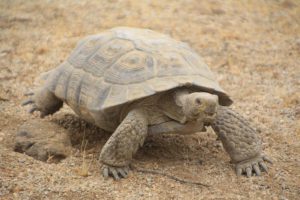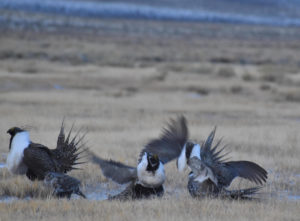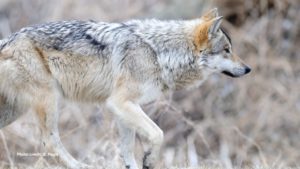For Immediate Release
April 7, 2020
Contacts:
Cyndi Tuell, (520) 272-2454, cyndi@westernwatersheds.org
Sandy Bahr, (602) 999-5790, sandy.bahr@sierraclub.org
Robin Silver, (602) 799-3275, rsilver@biologicaldiversity.org
Todd C Tucci, (208) 724-2142, ttucci@advocateswest.org
TUCSON, Ariz.— Today conservation groups sued the Bureau of Land Management (BLM) for its failure to protect the San Pedro Riparian National Conservation Area (RNCA) from livestock grazing’s harms. The BLM’s 2019 management plan sanctioned destructive levels of livestock grazing on protected lands, putting the area’s remarkable resources at risk.
“We’ve spent nearly a decade pointing out the legal flaws with the BLM’s plans to keep cows in this fragile ecosystem,” said Cyndi Tuell, the Arizona and New Mexico Director for Western Watersheds Project. “We’ve given them the scientific evidence demonstrating livestock grazing is not compatible with the protection of riparian areas in the arid Southwest, yet they turned their backs on their obligation to this incredible place and we are left with no choice but to hold them accountable in court.”
A group of 21 scientists sent a letter to the BLM a letter on May 20, 2018, urging the agency to exclude livestock grazing, noting that if livestock grazing in the SPRNCA were reauthorized, the many aquatic and riparian species and ecosystem functions be jeopardized and the critically important role of the Conservation Area as an ecological reference site would be lost.
The San Pedro RNCA – the nation’s first riparian National Conservation Area– was created by Congress in 1988 and BLM was given a mandate to “Conserve, Protect, and Enhance” the unique values it encompasses. The RNCA includes more than 46 miles of the San Pedro and Babocomari rivers, and nearly 55,000 acres of riparian areas and uplands, including four of the rarest habitat types in the Southwest (cottonwood/willow forests, marshlands, grasslands, and mesquite bosques). More than 400 birds, 50 species of reptiles and amphibians, and 80 species of mammals are found in the RNCA making this area a world-renowned biodiversity hotspot.
“In creating and designating the San Pedro Riparian National Conservation Area, Congress explicitly required the BLM ‘conserve, protect, and enhance’ the natural resources found there,” said Sandy Bahr, chapter director for Sierra Club’s Grand Canyon (Arizona) Chapter. “It is heartbreaking that the BLM took nearly a decade to develop a plan that utterly fails to do that, and that will, in fact, do harm to this ecological wonder.”
The BLM’s decision authorized livestock grazing on four separate allotments and included a provision that allows the BLM to increase the number of livestock allowed in the future without seeking public input. The decision also allows the agency to use “targeted grazing” by cows, sheep, or goats anywhere in the RNCA under the guise of “vegetation management.” The livestock used for these experimental vegetation treatments would be controlled with electric fences and would require new water sources which could impact water levels in the San Pedro River. It is unclear how the BLM would notify the public about when and where the targeted livestock grazing would take place.
“BLM should not be surprised by this lawsuit,” said Todd Tucci, an attorney with Advocates for the West and representing the plaintiffs. “BLM has known for decades that Congress required BLM to manage this area to conserve, protect and enhance the conservation values of the San Pedro Riparian National Conservation Area. And the mountain of scientific information establishes that BLM cannot protect these values – and the habitat for threatened and endangered species – by allowing the continued and expanded livestock grazing in this area,” said Tucci.
“Cows were supposed to be completely removed from this river,” said Robin Silver, cofounder and board member of the Center for Biological Diversity. “With all the other threats the San Pedro River faces – groundwater depletion, climate change, the border wall, you’d think the land manager responsible for protecting it would have done more for the river and not capitulated to the livestock industry.”
The groups also filed notice with the U.S. Fish and Wildlife Service and the BLM that the San Pedro RNCA plan violates the Endangered Species Act for failing to ensure that livestock grazing authorized by the Resource Management Plan does not jeopardize threatened and endangered species or adversely modify their critical habitat. The species the BLM failed to protect include the Huachuca water umbel, southwestern willow flycatcher, ocelot, jaguar, desert pupfish, Gila topminnow, western yellow-billed cuckoo, and the northern Mexican gartersnake.
The area is the traditional territory of the Chiricahua Apache, Opata, O’Odham, Hohokam, and Sobaipuri people.
The complaint filed in federal court can be found at this link.
The Notice of Intent to sue under the Endangered Species Act can be found at this link.
A copy of the letter from 21 scientists is available at this link.
###





